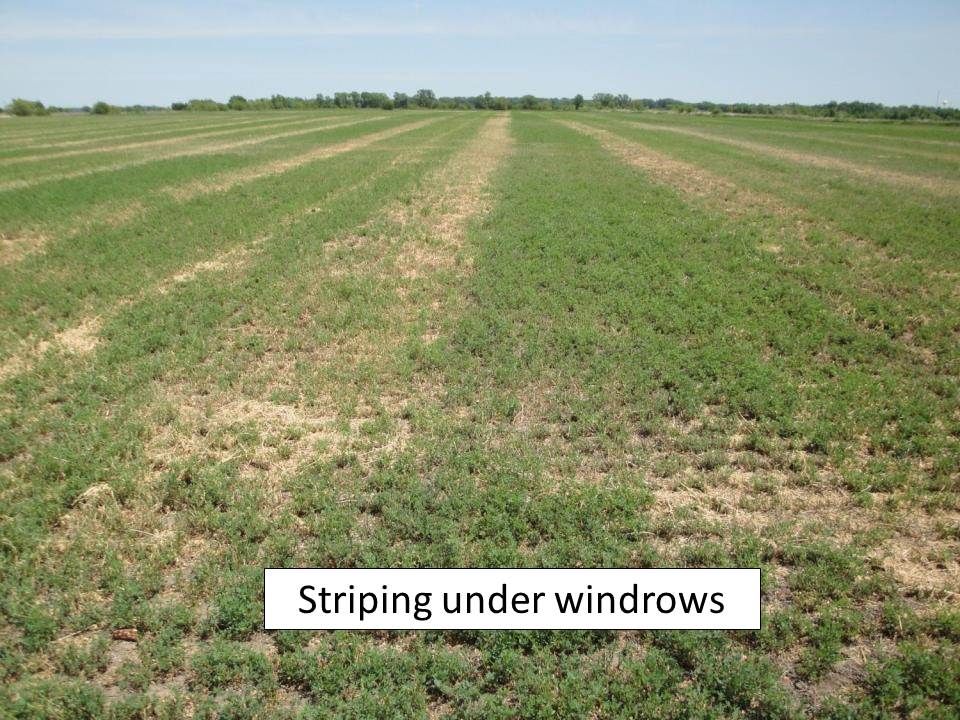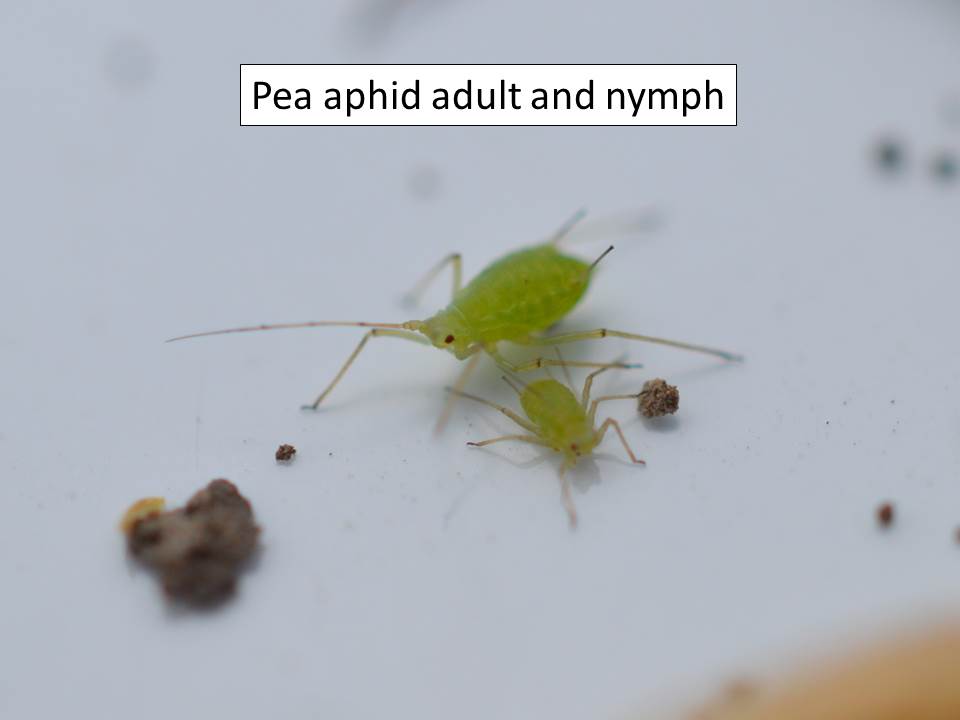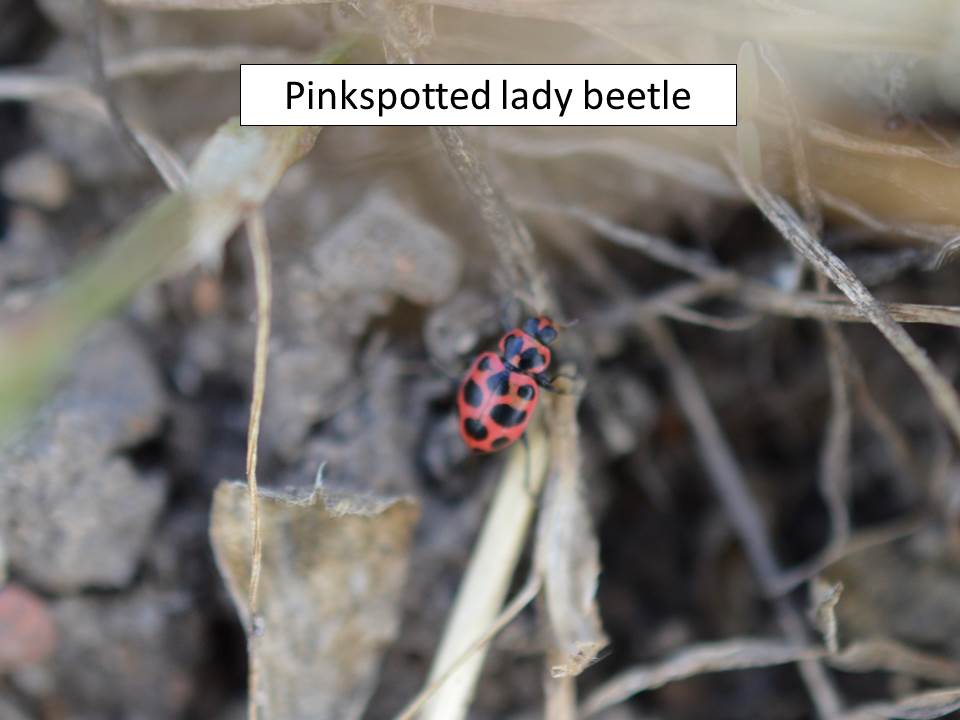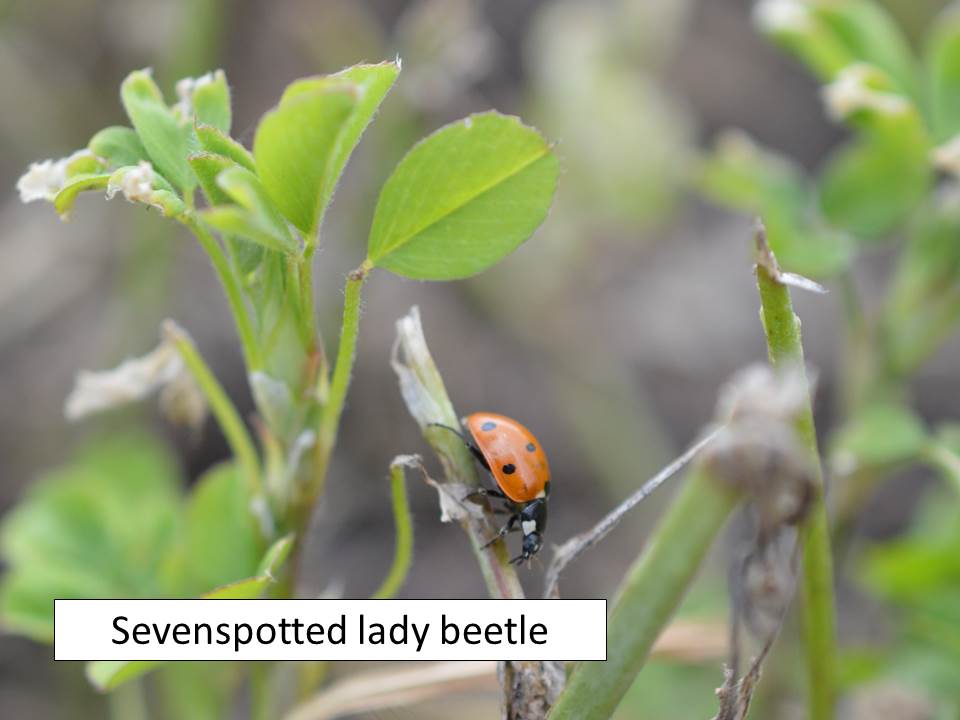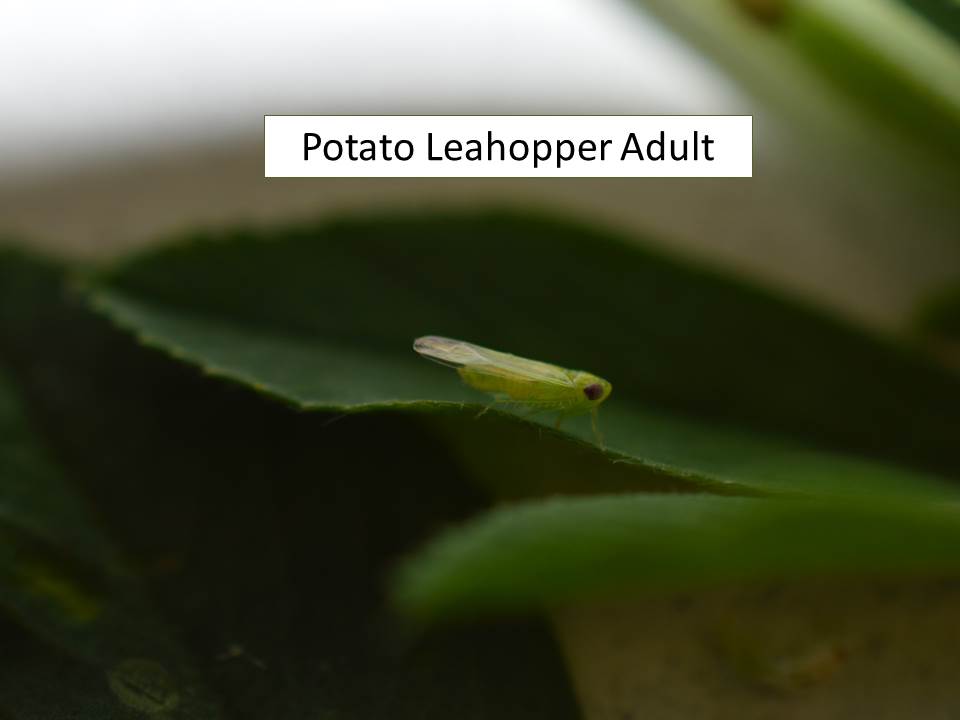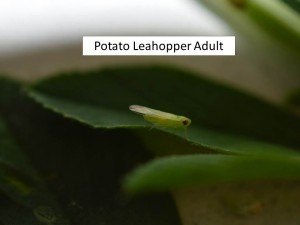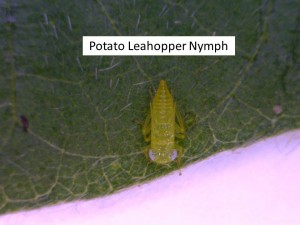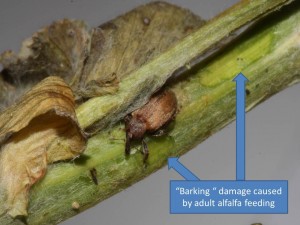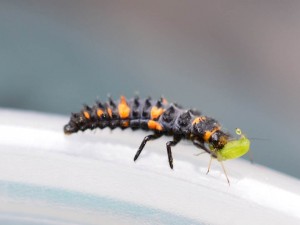–Dr. Jeff Whitworth and Dr. Holly Schwarting
Much of the alfalfa in northcentral Kansas that could be swathed has been in the last week. The cool damp weather has kept the adult alfalfa weevils in the fields. They are congregated under windrows in the cut fields where they do a little feeding on the stems, resulting in characteristic spots of epidermis removal, called ‘barking’. As these windrows are picked up there will be the characteristic striping across the fields where the windrows held back the regrowth underneath, plus provided the weevils with a protected site to continue feeding. Fields not yet swathed also have significant populations of adults but this should not impact the foliage prior to cutting.
Pea aphids are also present in both cut and uncut fields, but lady beetles and green lacewings are also, so would not expect pea aphid populations to have a negative impact on alfalfa.
Potato leafhopper adults are already present in all alfalfa fields we checked over the past week. This is earlier than usual for these pests as they typically don’t migrate into the state for another month, between the 2nd and 3rd cutting. Some of these populations already exceed the treatment threshold with just adults, so hatching nymphs will just increase the populations further. These potato leafhopper populations need to be monitored throughout the rest of the growing season.

